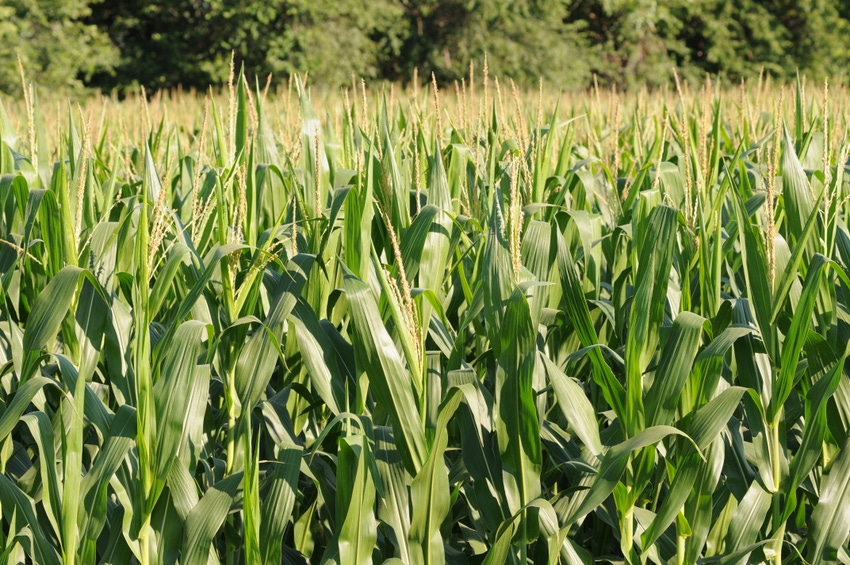Kansas State research quantifies effects of common corn cleaning methods; new app makes ear rot and mold easier to identify.

Kansas State University researchers have verified a belief that cleaning corn with common industry methods will reduce mycotoxins that may be present in the crop. However, they also cautioned that highly contaminated corn still may not be safe for animal feed or alternate uses even after cleaning.
The Kansas State findings are particularly relevant in an industry where one particular mycotoxin — aflatoxin — causes more than $52 million in U.S. corn losses yearly. A study from Michigan State University recently reported that U.S. corn losses top $1.7 billion in especially bad years.
“We have quantified that you can reduce mycotoxins by 30% by cleaning corn,” said Cassandra Jones, an associate professor of animal science and industry at Kansas State University.
Before this study, she said, there was little to no scientific literature indicating that cleaning corn with a screen to divide good material from bad material was effective in reducing mycotoxin content. There were studies to test the reliability of screening — as it is known in the industry — in the 1970s, but they were smaller studies that could not be replicated to achieve a high level of scientific validity.
“We are the first ones to do this, and we have fully replicated the results,” Jones said.
The work was done in the O.H. Kruse Feed Technology Center in Manhattan, Kan., a Bio-safety Level II facility. Aflatoxin is considered a Level II toxin by the U.S. Food & Drug Administration, and the university’s facility was the only place in Kansas with the proper equipment and security to conduct the study.
Ashton Yoder, a master's student in animal science and industry, carried out the study, which involved screening more than 60 barrels of corn, each with 111 lb. of grain that was naturally contaminated with aflatoxin in 2016.
Jones said, “It’s pretty normal for grain elevators, before storage, to clean that corn, but we really didn’t know how important that cleaning was or what it might do to mycotoxins not only by removing that portion but also through the physical abrasion of putting it through the screener and the mechanical abrasion of getting it off the kernels.”
Prior to cleaning, the corn samples measured 1,000 parts per billion of aflatoxin, which is five times more than the highest level allowed for use in animal feed. In the Kansas State study, researchers learned that screening reduced the level of aflatoxin to 700 ppb, a 30% reduction.
Cleaning caused a 6% loss to the harvested corn, known as shrink. That 6% shrink is removed as screenings. Because screenings contain the highest concentration of mycotoxin, Yoder said the amount of growth of mycotoxin in stored corn is potentially reduced.
However, he added, “What do we do with screenings? That’s the number-one question you’re going to get from a producer.”
Screenings can be safely used as animal feed, but Jones noted that producers should “be careful when purchasing them, particularly in high-mycotoxin years.” Beef cattle are among the least susceptible to mycotoxins, while swine are more susceptible.
Yoder said he’d like to study the potential uses of corn screenings as a biofuel or other alternate energy source.
“I haven’t seen any research on if they could use corn screenings as an energy source and maybe use that in years of high mycotoxin levels, assuming that the energy levels in screenings are higher than, say, a rice hull,” he said. “I don’t know the values for comparing those, but if I were to follow up with research, I would find a way to put a number on that.”
Jones suggested that other technologies common to the flour industry — such as optical sorters, density sorters and scrubbers — could be adapted for cleaning corn and perhaps make more of it safe for feed or other uses.
“If we continue to see mycotoxin levels rise over time, it might become more and more economical to start having those kinds of conversations,” she said.
New app
A new mobile app developed by researchers from Purdue University and the University of Arkansas will make it easier for farmers to access information about corn ear rot and mycotoxins.
The app, available as a free download, helps users identify common ear rots and determine safe levels for the use of grain affected by mycotoxins. The app also has information on ear rot management and properly storing moldy grain. Resources include practical tips for ear rot management and in-depth information on mycotoxins and conditions that favor ear rot development.
Farmers can also access information from the website https://Cornmycotoxins.com, which features high-quality images to help with ear rot identification and links to additional corn ear rot and mycotoxin management resources. The website was created as part of the Integrated Management Strategies for Aspergillus and Fusarium Ear Rots of Corn project, which was established in 2012 with funding from the U.S. Department of Agriculture’s National Institute of Food & Agriculture.
The goal of the project is to coordinate and promote a research and extension collaboration that provides corn producers with new tools for managing ear rots and mycotoxins.
“Corn ear rots can cause losses to yield and grain quality, and it can be difficult to store moldy grain,” said Charles Woloshuk, a professor in the Purdue department of botany and plant pathology and member of the app and website development teams. “Additionally, some of the fungi that cause ear rots are able to produce mycotoxins during the infection process. Prevention is the most effective management strategy. The app will make it possible for farmers to access vital management information, even when they’re working in the field.”
An Android version of the app is available for free download on the Cornmycotoxins website at https://Cornmycotoxins.com. An Apple OS version will be available by the end of the year.
About the Author(s)
You May Also Like


.png?width=300&auto=webp&quality=80&disable=upscale)
